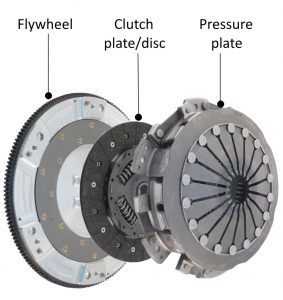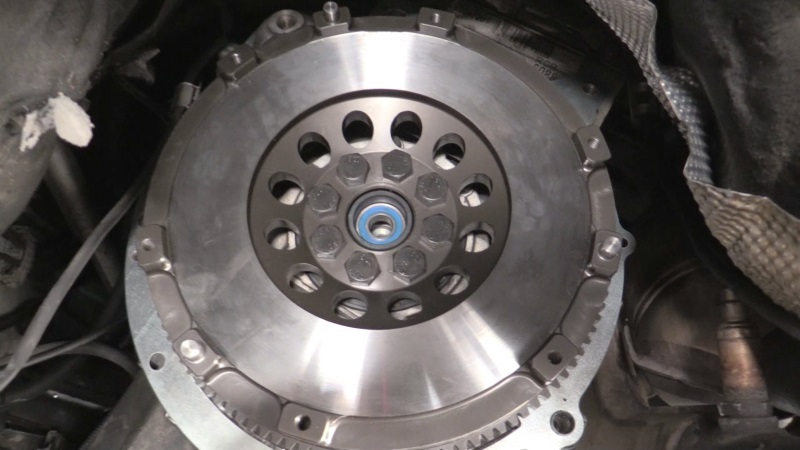What’s an engine flywheel and why should you care?

A diagram of the different components in a clutch
Alright, so a few times a week we get asked, “What even is a flywheel?” If you’re not sure, don’t worry, you’re definitely not alone. In pretty much every manual car or ute we see in the workshop, there’s a big, chunky, disc-shaped bit between your engine and the transmission, called the flywheel. It’s what helps the engine run smoothly, especially down those bumpy stretches like Ngaruawahia Road or through all the stop-start nonsense on Grey Street.
The main job of your flywheel is to keep the engine spinning steady and store a bit of energy so you don’t feel every little bump from each power stroke. It also mates up with the clutch plate. So, when you press the clutch pedal—say you’re rolling through the middle of Hillcrest in peak-hour or shifting gears over by Chartwell—the flywheel and clutch plate separate, letting you change gears without any dramas.
And just to clear up a common question—manual cars have these flywheels, but if you’re in an automatic (think Toyota Prius, Nissan Leaf, or Mitsubishi Outlander PHEV), then you’ve got something similar called a flexplate doing the job.
What knackers a flywheel?
Over time, especially with Hamilton traffic and a fair number of speed bumps and potholes out Te Rapa way or heading out to Cambridge, the clutch plate will wear. If that clutch plate gets down to the metal, it’ll start scratching grooves right into the flywheel. That’s just the start. If someone’s learning to drive a manual on a Peugeot 308 or a Honda Fit, riding the clutch or holding it on hills (hello, Dinsdale roundabout), it’ll get hot. Overheating builds up on the flywheel from all that friction, and can badly warp or crack the surface.
How do you know your flywheel’s packed it in?
There are a few classic signs, and we see them on all sorts—Mazda Demios, Ford Transits, even a few Hyundais and old Daihatsus from Morrinsville or Raglan. Here’s what to watch out for:
Slipping clutch – When you go to accelerate and your revs jump but the car doesn’t really pick up. Usually means the power’s not getting through, and a worn or scored flywheel is a regular culprit.
Burning smell – If you’re getting whiffs of burnt toast when you’re figuring out the clutch on your Suzuki Swift or Kia Rio, odds are there’s way too much heat from friction—often down to a worn flywheel.
Vibration – You might feel the car shudder as you take off at the lights at Five Cross Roads. That’s sometimes the flywheel not sitting right, or being badly out of balance after years of use.
Do I really need to replace or skim it?
If you drag your feet on fixing a dodgy flywheel, it’s only going to get worse—and pricier. Around here, we see the damage building up in winter when everyone’s dealing with Hamilton’s famous fog and doing lots of stop-start. Best to get it sorted before it takes out your clutch as well, or worse, leaves you stranded out in the country near Tamahere or Gordonton.
Flywheel repair, skimming, and replacement in Hamilton
At Grimmer Motors, we’re all about keeping your ride reliable, safe, and ready for anything NZ roads can dish out. If you reckon the flywheel’s acting up, let us take a look. We can sort flywheel skimming or full replacement if needed—whatever suits your budget and your car. Our crew’s worked on just about every car under the sun, Asian, European, you name it.
Everything from quick checks to major fixes, we’ll get you back on the road fast—whether you commute up and down Avalon Drive every day or you’re running tradie jobs around Rototuna and Cambridge.
For honest advice or to book a flywheel repair, clutch job or any car service Hamilton-wide, give us a shout. We’re just around the corner and always happy to help.

